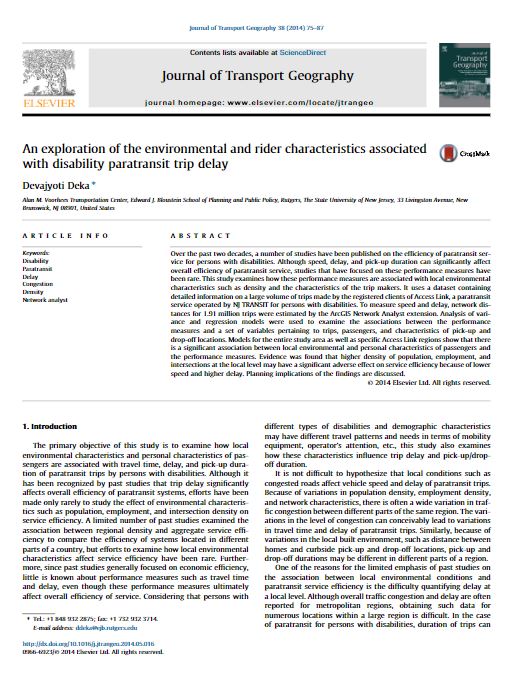Abstract
Over the past two decades, a number of studies have been published on the efficiency of paratransit service for persons with disabilities. Although speed, delay, and pick-up duration can significantly affect overall efficiency of paratransit service, studies that have focused on these performance measures have been rare. This study examines how these performance measures are associated with local environmental characteristics such as density and the characteristics of the trip makers. It uses a dataset containing detailed information on a large volume of trips made by the registered clients of Access Link, a paratransit service operated by NJ TRANSIT for persons with disabilities. To measure speed and delay, network distances for 1.91 million trips were estimated by the ArcGIS Network Analyst extension. Analysis of variance and regression models were used to examine the associations between the performance measures and a set of variables pertaining to trips, passengers, and characteristics of pick-up and drop-off locations. Models for the entire study area as well as specific Access Link regions show that there is a significant association between local environmental and personal characteristics of passengers and the performance measures. Evidence was found that higher density of population, employment, and intersections at the local level may have a significant adverse effect on service efficiency because of lower speed and higher delay. Planning implications of the findings are discussed.
